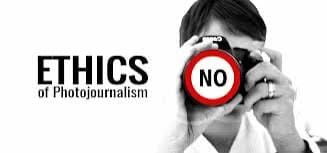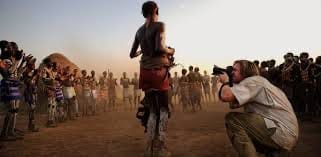Column, DNEWSINFO– In the present image-driven media landscape, photojournalism remains a powerful tool for storytelling—capable of capturing the emotional resonance of events, influencing public perception, and shaping policy outcomes
This power brings intense ethical responsibility: the imperative to represent the truth without distortion, even as technological innovation and industry pressures complicate the lines between documentation and manipulation.
Photojournalism fundamentally aims to document reality, yet it is not an objective mirror of the world. Every decision a photographer makes—where to stand, what to frame, when to press the shutter—acts as a filter, subtly shaping audience understanding of a story. Even technical choices such as camera angles and lighting contribute emotional meaning that may emphasize or downplay aspects of the event. In this way, every photograph presents a version of the truth, but it is truth viewed through a subjective lens.
The ethical challenges in photojournalism have intensified in the digital era. While minimal post-processing for clarity—such as adjusting sharpness, color balance, or exposure—is widely accepted, altering substantive content (for example, adding or erasing elements, changing scenes, or falsifying context) is unequivocally condemned in the profession. Such manipulation does not only mislead audiences but fundamentally undermines trust in journalism as an institution. The rapid spread of misinformation in digital spaces makes the integrity of images even more urgent: a single manipulated photo can fuel misunderstanding at scale, especially when amplified through participatory networks and social media.
Beyond the technical aspects, the ethics of photojournalism extend to the portrayal of subjects, particularly in moments of vulnerability. Images showing suffering, conflict, tragedy, or disaster pose additional moral questions about consent, dignity, and the depiction of pain. Photojournalists must weigh the public’s right to be informed against the risk of exploiting individuals or communities. Ethical storytelling demands compassion and self-reflection, challenging journalists to ask whether an image enhances public understanding without sensationalizing or dehumanizing the subjects it portrays.
The accelerated pace of news production places further strains on ethical practice. Pressure to capture and deliver images quickly can lead to errors, such as using outdated or contextually misleading photographs in new stories. The urgency to be first should never override the responsibility to be accurate. Each image must be rigorously verified for authenticity, timestamp, and location prior to publication—a process that intersects with audience roles in the digital age, where participatory viewers also engage in fact-checking, remixing, and circulation.
Institutions like the National Press Photographers Association (NPPA) and World Press Photo have developed ethical standards intended to guide photojournalists. These include principles of truthfulness, fairness, and accountability as foundational to the practice. For students and emerging professionals, these standards must be internalized as core values. Ethics in photojournalism is not about following a checklist—it is about making informed, conscious decisions with each frame, honoring both fact and subject.
Furthermore, the evolving media ecosystem requires persistent re-examination of these standards. The participatory nature of contemporary audiences—now empowered as “prosumers” who create, share, and remix content—heightens the stakes. User-generated content has democratized journalism, but it also accelerates the spread of misleading or manipulated imagery, necessitating stricter verification processes and more robust media literacy for both journalists and the public.
Ultimately, ethical photojournalism is about more than just avoiding manipulation. It is an ongoing commitment to transparency, accuracy, and respect for human dignity. A single compelling image has the power to spark public debate, expose injustice, or inspire action. Its value lies in its authenticity—in honoring the reality it seeks to reveal, and the humanity it frames for the world to witness. In an era saturated with visual information and misinformation, ethical photojournalism remains a vital beacon, guiding society toward truth amid complexity.
Edited and Compiled by Joshua adedoyin adejumo | July 16, 2025.
Discover more from DnewsInfo
Subscribe to get the latest posts sent to your email.





